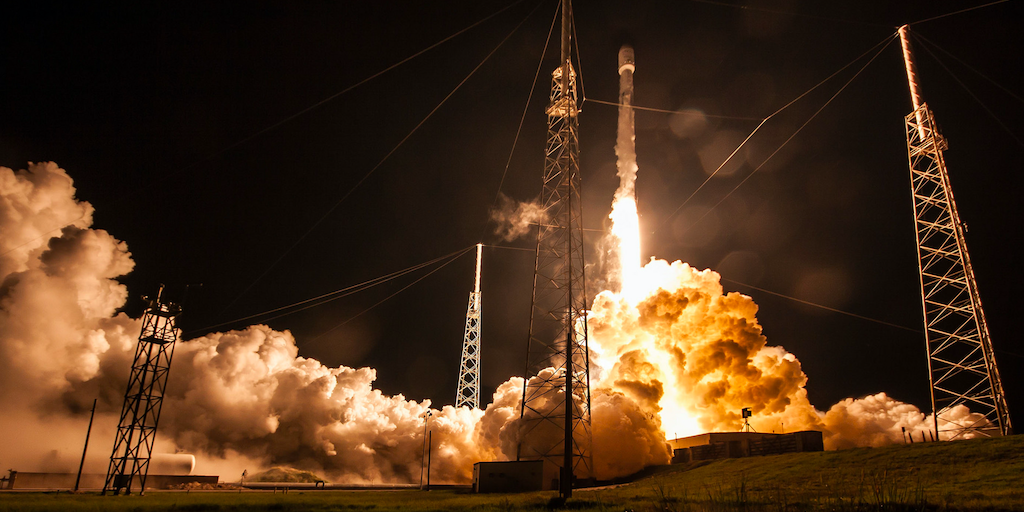

Satellite is ‘here to stay’ as connectivity solution, industry players say
Telecom | | November 8, 2024
Representatives of some of Canada’s players in the satellite sphere say satellite service should be seen as more than a last-mile solution to connecting all communities in Canada to high-speed internet.
Satellite has been regarded as a means of connecting some harder-to-reach communities in Canada, particularly in areas where fibre networks could be difficult to build out.
Rick Hodgkinson, CEO of Galaxy Broadband Communications, told attendees of a conference of Canada’s Rural & Remote Broadband Community (CRRBC) this week that “satellite is here to stay.”
Hodgkinson, whose company is a subsidiary of Crown Capital Partners Inc., said during a panel on satellite connectivity that in the next five years, he expects to see “dramatically lower” prices for satellite service.
“It’s going to be, performance and cost-wise, much, much closer to terrestrial pricing and resiliency and portability and able to work everywhere,” Hodgkinson said. “It’s truly a technology that has come to age.”
Hodgkinson explained that Galaxy has experience in areas of the country that can be difficult to service, including remote mining operations, oil and gas sectors, and construction projects.
“Wired is not an option. Wireless is not an option. Satellite is the option,” he said of those areas.
Telesat Corp.’s senior vice president of Canadian Sales Michele Beck said that satellite should be treated as an opportunity for connectivity earlier on in the process of connecting communities, rather than just the “option of last resort.”
“We can provide high-quality connectivity, great backhaul to connect communities, and you can do fibre to the home from there locally – build out your local access networks,” Beck said. “It’s a great alternative, and then it’s an amazing alternative as well to building resiliency into your networks – something that we’re promoting here throughout Canada but equally around the world.”
As far as resiliency goes, Beck said satellite has a better chance of holding up service in environmental emergencies.
“When you think about satellite infrastructure, it doesn’t burn, it’s up in the sky. You’ve got an antenna that sits within the community, and there’s very little infrastructure impacted by environmental issues such as forest fires, floods, and so forth.”
Sustainability related to satellites has been a topic of discussion in recent weeks.
Panel moderator Jason Presement, business advisor on market expansion with the Canadian Fiber Optics Corp., said in his opening remarks that as of the morning of Tuesday, Nov. 5 – the date of the panel, there were 10,962 tracked objects in space, not including space junk.
Last month, a letter signed by dozens of researchers to the United States’ Federal Communications Commission’s space bureau chief Julie Kearney asked that new launches of low-earth-orbit satellites for internet service be paused until the commission conducts an environmental review for mega-constellations.
The letter took particular aim at Elon Musk’s Space Exploration Technologies Corp. (SpaceX), which as of July 2023, Musk said had over 400,000 customers in Canada, representing around three per cent of Canadian households.. The signatories state that the number of large satellites in the lowest level of low-earth-orbit (LEO satellites) has increased by 127 times, and that the overall number of large LEO satellites has increased 12 times in the past five years, led by SpaceX.
“Some experts are estimating an additional 58,000 satellites will be launched by 2030. Other plans have been proposed to launch 500,000 satellites to create new mega-constellations that would power satellite internet,” states the letter, which has been signed by researchers from institutions such as Columbia University, Harvard University, Princeton University, the Smithsonian Astrophysical Observatory, the Dublin Institute for Advanced Studies, and more.
The letter writers are worried that environmental harms of “launching and burning up so many satellites aren’t clear.”
“That’s because the [United States] federal government hasn’t conducted an environmental review to understand the impacts. What we do know is that more satellites and more launches lead to more damaging gasses and metals in our atmosphere. We shouldn’t rush forward with launching satellites at this scale without making sure the benefits justify the potential consequences of these new mega-constellations being launched, and then re-entering our atmosphere to burn up and or create debris,” they wrote.
“This is a new frontier, and we should save ourselves a lot of trouble by making sure we move forward in a way that doesn’t cause major problems for our future.”
Lynne Genik, director of high throughput and secure networks challenge program with Canada’s National Research Council, told the panel that the research council is focused on the technology and challenges of research and development at this time, versus sustainability.
Genik said her department was challenged in 2018 by the federal department of Innovation, Science and Economic Development (ISED) to help bridge the digital divide through research and development.
“Once you give the space to people, there are just so many more options and you’re not restricted to looking for fibre, fibre, fibre everywhere. So we’re working on trying to solve some of those really difficult research development challenges for the future.”
Genik added that the space can often be regarded as the “Wild West.”
“The regulatory framework is viewed as being somewhat behind what’s actually happening, kind of like the internet, it’s always trying to catch up,” Genik said, noting that there is “lots of innovation which brings risk.”
Telesat’s Beck said the company has participated in proceedings with the International Telecommunication Union on space sustainability.
“Telesat feels that we are – and we are in fact – good stewards. We’ve been in this space for the past 50-some odd years. We are very conservative, we are careful with our approach, and we built our constellation to be the most efficient that we can,” Beck said.
“We don’t need thousands of satellites, actually, to provide really high broadband connectivity solutions. We’re designing our constellation with 200 satellites. They’re larger satellites, they’re operating in low-earth orbit, but we’ve integrated all kinds of capability on these satellites that we can provide multi-gigabit per second trunks, and even tens-of-gigabytes trunks down to any one particular community, or site, we call it.”
Telesat’s plan is to launch in mid-2026. Through a combination of the company’s equity contributions, vendor financing, and funding from Canadian federal and provincial governments, Telesat Lightspeed has been fully funded for its first 156 satellites, which its CEO Dan Goldberg stated last summer will give it global coverage.
Global service is scheduled for late 2027. Once it gets up and running, cash flows from the service will fund the remaining 42 satellites to be added to the constellation.
“There’s a vision that wired is better, and I think in five years’ time there’s going to be a lot more wireless or satellite-based services out there, because of the resiliency,” Beck said. “There’s not a lot of infrastructure required on the ground to effectively get the services that you need.”
Jason Trembley, vice president of business development with Terrestar Solutions Inc., anticipates that in five years’ time, the end user will not care if their service tower is down the road, up on a hill, or up in space.
Terrestar’s pitch is that it is the only Canadian-owned mobile satellite services operator, working on direct-to-mobile services.
“We’re engaged in this race to bring service to the everyday device, directly to cellphones, but also supporting IoT applications and everything else.”
“We’re fortunate in that we already own the geostationary satellite in the sky right now, and we’re able to offer services through network extension services for network operators of all different sizes. We pride ourselves in being an open network, but the idea here is to enable network operators to extend their coverage to their existing users,” Trembley said.
“There’s challenges that I think are very unique to Canada, specifically around the Arctic, around our national defence and securing ourselves. So keeping that within Canada, keeping that Canadian sovereignty, is I think an existential issue.”



